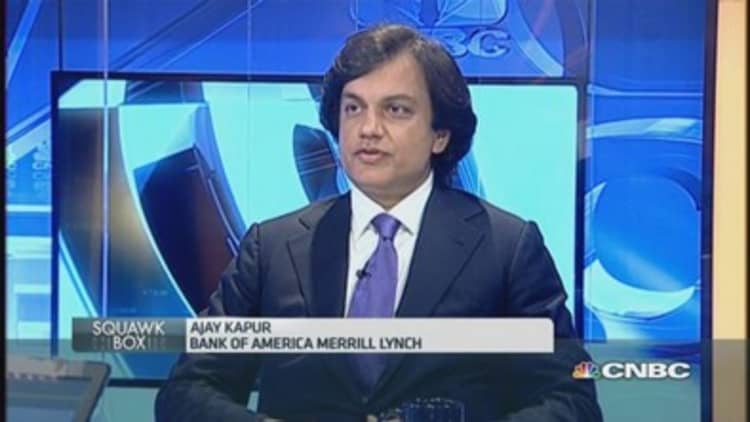
The People's Bank of China (PBoC) isn't known for embracing global trends, but it's now widely expected to follow the easing footsteps of its international peers after a raft of dismal data.
Twin purchasing managers' index (PMI) surveys for January released in the past 48 hours showed contractions in China's factory activity. The government's official PMI stood at 49.8, a more than two-year low, while HSBC's private survey came in at 49.7, its second month below the 50 level that separates expansion from contraction. Other data over the weekend showed growth in the services sector dropped to a one-year low in January.
"We think the PMIs opened the window for a broad 50 basis-point RRR (reserve ratio requirement) cut in the first quarter," said economists at Citi in a recent report, adding that the last round of country-wide RRR cuts was triggered by a below-50 PMI reading in late 2011.
Analysts at Mizuho Bank agreed: "With the Chinese economy facing headwinds from weaker European demand and disinflation, we see rising pressure for more stimulus measures, such as liquidity injections, interest rate cuts or RRR cuts," the bank said in a note on Monday.
Targeted vs big-bang stimulus
The PBoC unveiled a surprise interest rate cut in November. Calls for further stimulus measures including RRR cuts or another interest rate cut have since increased after China posted its slowest annual economic growth in 24 years. However, some experts say the central bank is reluctant to unleash such measures due to concerns about credit flows, opting for small-scale options instead.
"Despite our long-held view for the PBoC to cut RRR, the central bank continues to maneuver market liquidity through reverse repos, suggesting its hesitation to embark broad-based easing in the near term," said Australia New Zealand Banking Group (ANZ), referring to the bank's injection of 45 billion yuan during Thursday's weekly open-market operation.
Still, the majority of analysts expect that hesitancy to disappear. Richard Yetsenga, head of global markets research at ANZ, told CNBC that he expects a combination of rate cuts and RRR cuts either this quarter or the next.
It's not just PMI!
Some experts may be quick to dismiss the PMI readings due to seasonality ahead of the Lunar New Year holidays this month, but other gloomy economic indicators also support easing calls. Data released last week showed fiscal revenue sliding to its lowest level in over two decades, while renminbi depreciation has triggered liquidity outflows, seen in the sharp drop in foreign exchange reserves in December.
Read MoreChina faces biggestfiscal challenge since 1981
On top of a RRR cut, Citi also expects a 25 basis-point interest rate cut sometime this month in light of the rising real cost of capital amid falling inflation. With annual consumer prices at five-year lows, deflationary pressure is making borrowing more expensive for companies. The seven-day repo rate, a measure of interbank funding, spiked in recent sessions and briefly topped 5 percent on Monday.

